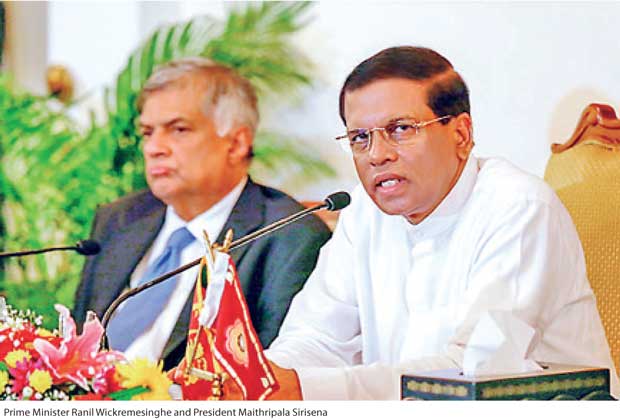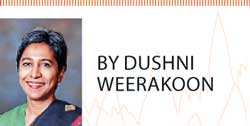19 Jan 2018 - {{hitsCtrl.values.hits}}

 Strong macro-stabilisation efforts characterised Sri Lanka’s economic policy in 2017. After two years of budgetary turmoil, fiscal consolidation efforts under an ongoing International Monetary Fund (IMF) programme are delivering higher revenues for the cash-strapped Treasury. A stronger fiscal footing is allowing Sri Lanka’s Central Bank to act pragmatically in its fight against inflation.
Strong macro-stabilisation efforts characterised Sri Lanka’s economic policy in 2017. After two years of budgetary turmoil, fiscal consolidation efforts under an ongoing International Monetary Fund (IMF) programme are delivering higher revenues for the cash-strapped Treasury. A stronger fiscal footing is allowing Sri Lanka’s Central Bank to act pragmatically in its fight against inflation.
As the macroeconomic fundamentals improve, so too does Sri Lanka’s performance in two pressing areas: export earnings and foreign direct investment (FDI) inflows. Export earnings were up by nearly 9 percent in the first 10 months of 2017 compared to a contraction of 2.5 percent over the same period in 2016. The FDI inflows in the first nine months of 2017 stand at US $ 766 million compared to a low US $ 397 million over the same period in 2016.
The economy is faltering on the growth front. Gross domestic product (GDP) growth fell to a low 3.3 percent in the third quarter of 2017. This suggests that annualised growth will hover around 4 percent — a steady decline from the 5 percent GDP growth achieved in 2014. The drop was partly due to the harsh weather that devastated agriculture (a sector that generates 7 percent of total GDP).
The other part of the growth slowdown came from Sri Lanka’s contractionary fiscal consolidation efforts under the IMF programme. Higher taxes on consumption and production constrained both household disposable incomes and corporate profits.
The need for strong fiscal consolidation is apparent. Sri Lanka’s accumulated debt overhang was considerable by end-2014. At that time, net external debt exposure totalled US $ 22.9 billion and expanded further to total US $ 24.8 billion at end-2016.
Indeed, Sri Lanka’s most critical medium-term challenge is a bunching up of its external debt service payments during 2019–2022. The risks of refinancing large volumes of sovereign bonds remain high. Better management of public finances and evidence of sound macroeconomic policy are both vital to retain investor appetite for Sri Lanka’s sovereign bonds.
To add weight to the above, the government finally set out its economic direction for the country in September 2017 under its Vision 2025: A Country Enriched policy framework. At its core, the policy aims to position Sri Lanka as a competitive, knowledge-based economic hub at the centre of the Indian Ocean.
This entails a transformational shift in ambition to tackle deeply-rooted structural constraints on growth while maintaining a stable macroeconomic outlook. The first step towards this was taken in the government’s November 2018 budget, which outlined commitments to liberalise sectors such as shipping and logistics. This signalled the government’s intention to position Sri Lanka as a regional goods and services hub.
After initial missteps in managing public finances, dispelling policy confusion and establishing prudent leadership at key economic agencies, the Sri Lankan economy appears to be turning a corner at long last. Stronger macroeconomic fundamentals and a clear commitment to reform can entice private investment and propel a medium-term economic take off.
The primary risk Sri Lanka faces is the interaction of economics and politics. Sri Lanka’s local and provincial elections have been delayed since 2015 due to a web of electoral reforms. Local government elections in February 2018 will be the ruling coalition’s first test of electoral popularity. Once these elections kick off, the cycle of these electoral ‘tests’ for the government will only end with the next presidential elections, which are set for early 2020.
A mid-term reform push is hard even without this slew of local elections. The adjustment costs of fiscal reforms have already hit ordinary voters in the form of higher prices whereas the gains from structural reforms will likely manifest after the current term of office. A reform push is trickier again since Sri Lanka is already on a low growth trajectory amid a tight fiscal austerity programme.
The politics are also daunting. The elections will test the apparent political stability of the ‘unity government’ in the coming months as the ruling coalition parties plan on contesting separately. Just when Sri Lanka’s investment climate begins to seem more promising, electoral volatility in the lead up to the 2020 presidential elections could deter investors from cashing in immediately.
Sri Lanka will enter a critical phase of its economic reforms in 2018. In order to reap the full benefits of macroeconomic stability, the government should balance some quick policy fixes with deeper reforms. A number of important reforms may be too complex to implement in any meaningful fashion at this time, such as tackling loss-making state-owned enterprises or increasing labour market flexibility.
A selective approach that offers easy, quick fixes to cut down red tape and bureaucracy will allow tangible gains to keep coming. If appropriately managed and implemented, these much-needed economic reforms can help Sri Lanka become ‘a country enriched’.
(Dushni Weerakoon is Executive Director and Head of Macroeconomic Policy Research at the Institute of Policy Studies of Sri Lanka)
10 Jan 2025 1 hours ago
10 Jan 2025 2 hours ago
10 Jan 2025 4 hours ago
10 Jan 2025 4 hours ago
10 Jan 2025 4 hours ago